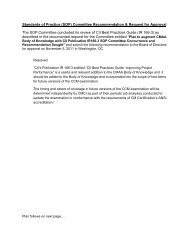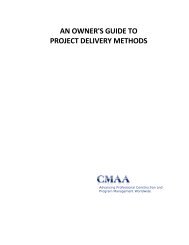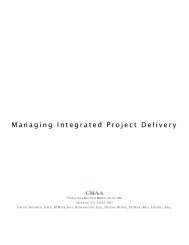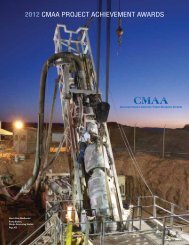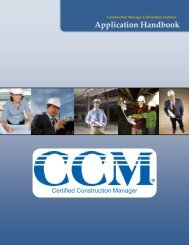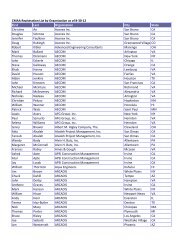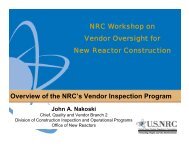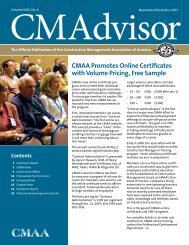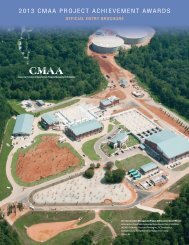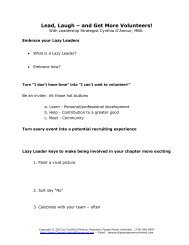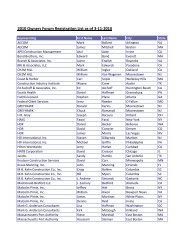FMI/CMAA Tenth Annual Survey of Owners
FMI/CMAA Tenth Annual Survey of Owners
FMI/CMAA Tenth Annual Survey of Owners
You also want an ePaper? Increase the reach of your titles
YUMPU automatically turns print PDFs into web optimized ePapers that Google loves.
Scenario 2: Struggle for StabilityIntroductionIt took longer than expected to get through the Great 2008-2009 Recession, with globalization slowing down and both businessesand governments focusing on rebuilding their local economies. Fears <strong>of</strong> “too big to fail” have led communities andgovernments to take a somewhat protectionist stance resulting in closely held local jobs, expertise, materials and resources.Through continued government stimulus efforts and resulting public infrastructure investments, local pockets <strong>of</strong> prosperitystart to emerge and spread, yet the overall economy struggles to stabilize. Private capital flows slowly back into the A/E/C marketas the permitting and approval process now runs through both federal bureaucracies and local politicians with their hands outraising the risk to financiers. Design and construction firms have become more lean and competitive; nonetheless, innovativeproject approaches and partnerships provide some market participants with work firms never would have realized otherwise.Recessions tend to spark new business and innovation, and the Great 2008-2009 Recession is no exception.Struggle For StabilityGlobalSocialTechnologicalEconomicPoliticalEnvironmental• Unstablegeopoliticalenvironment• Globalizationslows down• Governmentsfocus onimproving theirlocal situations• Social disparitiesincrease; middleclass isthreatened• Strong emphasison building localhuman capital• Crumbling publicinfrastructure• Rapid tacticaltechnologicalprogress(“leapfrogging”<strong>of</strong> dirtytechnologies)• Grass-rootsapproach toimprovingcollectivewell-being drivesinnovation• Slow GDP growth• Governmentstimulus programsprovidefoundation forattractingprivate capitalin A/E/C markets• Protection <strong>of</strong>local industries• Emergence <strong>of</strong>“pockets <strong>of</strong>prosperity”• Unstable localpolitics andcontinuousregional disputes• Undue politicalinfluence andlobbyists impactdevelopment <strong>of</strong>capital projects• Local initiativesdrive sustainablebusinesspractices indesign andconstruction• Focus on usinglocal materialsand resourcesImplicationsLocal and national service providers dominateTight ties to federal, state and municipal government bodies arecritical for service providersOrganized labor tends to be advantagedAlternative financing is needed by owners and used bycontractors/service providersTechnology is applied to create small solutions to small problemsPolitical is the primary driver, whereas global is the weakest driverPrice is the dominant decision driver for owners in serviceprovider selectionInnovative owners and service providers attack bottlenecks(aging workforce, aging infrastructure, skill building, etc.),typical owner responding to issues as they ariseQualified owners and service providers have access to moderatelyexpensive capitalWinning StrategiesAbility to orchestrate or provide financingHorse picking (finding the pockets <strong>of</strong> prosperity and pursuingwork there)Tight political connectionsAbility to operate in a unionized environmentDesign execution and field productivity-driven cultureMarketing, sales, and execution differentiation29<strong>FMI</strong>/<strong>CMAA</strong> <strong>Tenth</strong> <strong>Annual</strong> <strong>Survey</strong> <strong>of</strong> <strong>Owners</strong>



